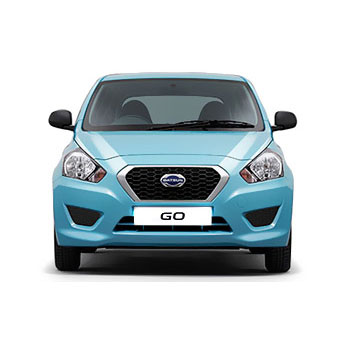Is The Datsun GO A Good Affordable Car tTo Buy?
Dual airbags, ABS brakes and an improved interior come as standard in the Datsun GO, since the 2019 update.
.
.
Relentless criticism about the Datsun GO’s lack of basic safety features finally encouraged Nissan to install dual airbags and ABS brakes in its baby hatchback.
.
The updated GO, launched in SA a couple of years ago, sports a facelift, updated suspension, added insulation for better refinement, but most importantly improved safety in a car that previously had only a driver’s airbag and no antilock brakes.
.
After being launched here in 2014 at a starting price of R89,500, the GO was lashed for receiving zero stars in a crash test conducted by Global NCAP’s Indian division. The addition of a driver’s airbag later raised the car’s rating to one star out of a possible five, but its body crumpled so much under the impact that it negated the effect airbags may have had.
.
Nissan claims to have made improvements to the Datsun GO’s upper body and front body structure, while stability control will be introduced later in 2019.
.
Despite its dismal crash-test result, the car’s keen pricing made it a popular seller among cash-strapped local motorists, many of whom were moving up from the public-transport ranks for the first time and, since the launch, the range has grown at Group 1 Nissan to include the GO+ panel van and the seven-seater GO+ hatchback.
.
The 2019 improvements to the GO range have pushed prices beyond those early bargain-basement levels and the baseline Mid version started selling for R144,500. With a few more bells and whistles the higher-specced Datsun GO Lux — the subject of this test — sells for R165,000. Both versions come with 1-year insurance included in the price.
.
A redesigned front grille and front and rear bumpers give the updated GO a fresher look, but the main work’s taken place inside. An interior revamp has noticeably improved the cabin appeal with smarter-looking seat upholstery, and a combination of silver finishes and a carbon-fibre look for many of the plastic surfaces.
.
.
The GO is compact but not impractically small, and four adults will fit tightly but without unwanted intimacy, while there’s decent oddments space including a lidded binnacle between the front seats. The 265l boot is a little larger than the segment average and includes a full-size spare wheel, and the single-piece rear seat backrest folds down to expand the carGO hold.
.
Standard niceties include reverse parking sensors, central locking, air con, front and rear electric windows, onboard computer, and speed-sensitive power steering. The Lux grade, in addition, lays on a rear wiper with a washer, 14" alloy wheels (instead of steel versions), and LED daytime running lights.
.
The original GO had just a smartphone docking station connected to a pair of speakers. Now all versions have an 18cm touch screen infotainment system with radio, USB and Bluetooth phone connectivity, and Apple Carplay and Android Auto capability.
.
Navigating the infotainment is fairly straightforward, except for tiny volume icons which were finicky to use (note to all car manufacturers: knobs are much easier). These icons had to be employed quite regularly to crank up the volume and drown out the sound of the 1.2l three-cylinder engine as the revs rose.
.
.
Performance-wise the GO wins back some kudos as it doesn’t make a bad urban runabout. Although its outputs are a humble 50kW and 104Nm, the power-to-weight ratio is decent because the little car is a flyweight at 829kg. Light and small, with a tiny turning circle, the Datsun scurries with rodent-like agility through the urban jungle.
.
Its power limitations (and noisy engine) are more keenly experienced on the open road and I wouldn’t necessarily want to drive one twixt Joburg and Durban, but the car’s mostly able to maintain the 120km/h national speed limit in 5th gear — even up some medium-gradient hills. Fuel consumption is a creditable 6l/100km (the factory claims 5.2l).
.
The handling is acceptable, though the skinny tyres tended to squeal prematurely when I tried to push through bends a little faster.
.
The ride quality, while choppy in a typically small-car way, is acceptably comfortable on most surfaces. The little Datsun’s high-profile tyres and above-average 180mm ride height competently absorbed bumps on our gravel road test. The suspension sometimes thunks noisily when driving over potholes, however, and felt as if it was bottoming out.
.
In summary, the refreshed Datsun GO is an improved effort over its dismal predecessor, particularly in its smartened-up cabin and boosted safety levels. On paper, it seems like a relative bargain with a higher level of features than its similarly-priced competitors, along with that enticing one-year free insurance deal.
.
But the GO’s refinement still lags behind the opposition. A question mark also still lingers over its structural integrity and we’d be keen to see how the latest version fares in a crash test.
.
.
Tech Specs
.
ENGINE
Type: Three cylinder petrol
Capacity: 1,198cc
Power: 50kW
Torque: 104Nm
.
TRANSMISSION
Type: Five-speed manual
.
DRIVETRAIN
Type: Front wheel drive
.
PERFORMANCE (claimed)
Top speed: 161km/h
0-100km/h: 13.3 seconds
Fuel Consumption: 5.2l/100 kml/100km (claimed); 6l/100km (as tested)
.
Emissions: 123g/km
.
STANDARD FEATURES
Air conditioning, front and rear electric windows, electric mirrors, 18cm touchscreen infotainment system, central locking, reverse parking sensors, LED daytime running lights, tilt-adjustable steering, onboard computer, ABS brakes, dual front airbags, 14" alloy wheels with 165/70 R14 tyres.
.
Warranty: 3 years/100,000km
Maintenance plan: Optional
..
.
.
..
Article sourced from https://www.timeslive.co.za/


